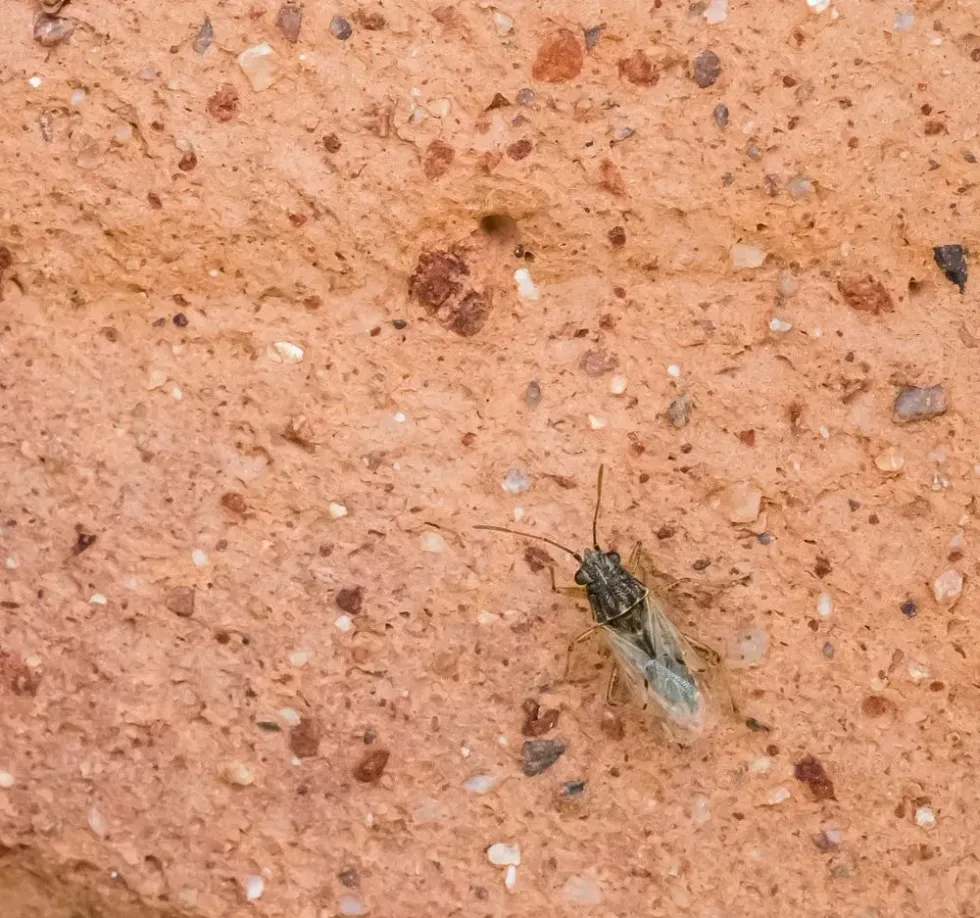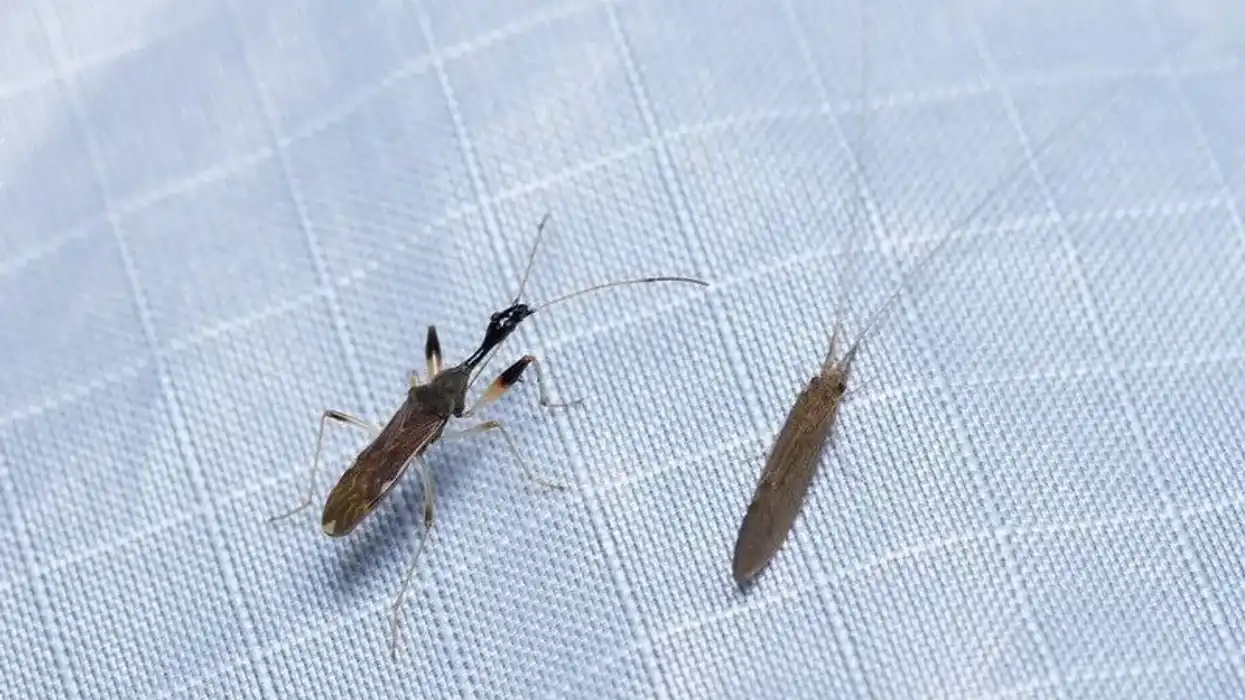Many people appreciate bugs and insects, and if you are one of them, then we have false chinch bugs for you! A false chinch bug (Nysius raphanus) is a small-sized insect that feeds on fluids from plant matter to stay alive.
They are grayish-brown in color and have bulging eyes. Due to their appearance, you might mistake them for big-eyed bugs, who look very similar to false chinch bugs.
False chinch bugs can mostly be seen around North America.
Infestation by these bugs can be heard in many places. These bugs even migrate from one place to another following the weather of the place.
They stay in comparatively colder places and they are more active at times of the day when it's a little colder outside, like in the early mornings or evenings. If you see a cluster of these bugs around your house, it's probably because it's hot outside and they have nested there to get away from the heat.
Read on to know more about false chinch bugs, and if you like this article, then check out the ambush bugs and stink bugs.
False Chinch Bug Interesting Facts
What type of animal is a false chinch bug?
The false chinch bug (Nysius raphanus) is a kind of insect that belongs to the family Lygaeidae.
What class of animal does a false chinch bug belong to?
False chinch bugs (Nysius raphanus) belong to the class Insecta of animals.
How many false chinch bugs are there in the world?
The exact population of false chinch bugs is not known, but it doesn't seem they have many great threats to their population and their population also grows every 10 years. We can certainly assume that their population is not threatened.
Where does a false chinch bug live?
These insects can mainly be found in North America. They can be seen in places like the United States, the West Indies, and Mexico. In the United States, most of the population lives in the western and southern parts of the country.
What is a false chinch bug's habitat?
These true bugs can mainly be found in pastures, grassy fields, foothills, weedy fields, and sometimes inside households. They mainly come to live indoors to get away from the heat outside in the summer. They also migrate from one place to another according to the availability of food.
Who do false chinch bugs live with?
False chinch bugs live in groups. Bunches of them can be seen around their native places. Infestation by this species is a big issue in many areas.
How long does a false chinch bug live?
These insects don't live for long and they only live for a few months. Nymphs live for about three weeks and then they turn into false chinch bug adults. Adults then only live for about a few weeks, summing up their life cycle into only a few months.
How do they reproduce?
Many eggs are laid by females of adult false chinch bugs in cracks in the soil or loose soil. These eggs usually hatch in about four days. False chinch bug nymphs are usually wingless. These nymphs feed and grow for the next three weeks.
They go through five transformational stages or instars in this time before they become complete adults. Adults don't live for very long. These bugs breed many times a year and about four to seven generations of false chinch bugs happen every year.
What is their conservation status?
The conservation status of false chinch bugs is Not Evaluated according to the International Union for Conservation of Nature. They don't live for long, and they are not facing any great threat at the moment, so we can certainly assume that currently their population is not threatened in any way.
False Chinch Bug Fun Facts
What do false chinch bugs look like?
False chinch bugs are small-sized bugs and they have an oval-shaped body. Their wings are usually transparent and the rest of the body is grayish-brown colored. Nymphs and adults in both stages have bulging eyes.
When false chinch bug adults are not flying, their wings are resting crossed on the end of their back. They have pointy mouthparts.
Nymphs on the other hand are wingless and they have the same grayish brown-colored body as adults. They have light tan-colored stripes on their thorax and their abdomen is also light tan colored. A few little red spots on their abdomen can be seen.
How cute are they?
They are not at all cute. They might seem fascinating to many people who are insect enthusiasts, but to others, their appearance might gross them out. Their appearance doesn't make them cute, and their behavior doesn't help their case either. They infest many plants which harm crops.
How do they communicate?
False chinch bugs communicate through biochemical means. They release a chemical called pheromones, through which they communicate with each other.
The chemical is not detectable by humans but insects can smell it pretty easily. They use it to attract mates when it's breeding season, to scare away predators, or, to let their fellow bugs know of the location of food.
How big is a false chinch bug?
These insects are only about 0.12-0.17 in (3-4.3 mm) in size. Mosquitoes can be four times the size of these bugs as they are about 0.4 in (10 mm) in size.
How fast can false chinch bugs move?
A false chinch bug (Nysius raphanus) doesn't move very fast. These bugs can fly too but they don't fly too fast either. They mainly move when the environment is a little colder, so they move in the evenings or early mornings.
How much does a false chinch bug weigh?
The exact weight of these bugs is not known, but they are very small-sized bugs. We can certainly assume that they are very light weighted bugs.
What are the male and female names of the species?
There are no names for males or females of this species.
What would you call a baby false chinch bug?
Baby false chinch bugs don't go through the larva phase. When the eggs hatch, these bugs are directly born into juvenile bugs. These juvenile bugs are called 'nymphs'.
What do they eat?
False chinch bugs are herbivorous. Both adults and nymphs feed on fluids of plants or weeds. They have a needle-like organ that sticks into plant matter and sucks out fluids, like the sap of the plant. They can be seen around a wide variety of plants including potato plants, and mustard plants.
Are they harmful?
These bugs suck out the fluids and juices from plant matter which can damage the host plants in many ways. Sometimes when the bugs suck out the fluids, the plant can't recover from the damage.
Aggregations of the bugs can also be seen while feeding on plants, so infestation by these bugs can become a huge issue as the plants might not get enough time to recover.
Many times it has happened that people had to interfere to drive them away so that they couldn't harm their crops anymore. They don't cause any more harm other than that to humans.
Would they make a good pet?
A false chinch bug doesn't make a good pet. The bugs harm plants and they stay in groups. It's also hard to keep them as pets because of their small size and small lifespan.
Did you know...
A homemade solution to control false chinch bugs is by making a mixture containing 40 % of alcohol, 40% of water, and 20% of dish soap. If you spray this mixture on these bugs, it will kill them.
Crops might dry up in spring, so during spring, these bugs might seem to migrate from one place to another.
Where do false chinch bugs come from?
False chinch bugs are born from eggs that female adults lay on soil cracks or below the plants they feed on. The egg then hatches and a little wingless false chinch bug nymph comes out and turns into an adult within a few weeks.
Even an adult false chinch bug doesn't live for long. They spend their lives feeding through plants. Several generations happen throughout the year.
How do you get rid of false chinch bugs?
These bugs may feed on plants in small numbers or there may be aggregations of large numbers of them. If they are low in number, sometimes the damage goes even unnoticed, but in terms of aggregations of large numbers, false chinch bug control is needed.
For example, during the winter of 2017 in southern parts of Georgia, aggregations of these bugs damaging strawberries were reported.
They can even infest homes, but even if that happens, they only live for about a week or so. Most of the time, there is no need for bug control.
If you need to control them, simple water works fine when the group of bugs is small.
Other times, when many of them have aggregated, insecticides work pretty well. If you want to control their population in your home, remove the water supply to your garden when it's very hot outside or get rid of weeds around your home.
Here at Kidadl, we have carefully created lots of interesting family-friendly animal facts for everyone to discover! Learn more about some other arthropods including io moth or atlas beetle.
You can even occupy yourself at home by drawing one on our False Chinch Bug coloring pages.










